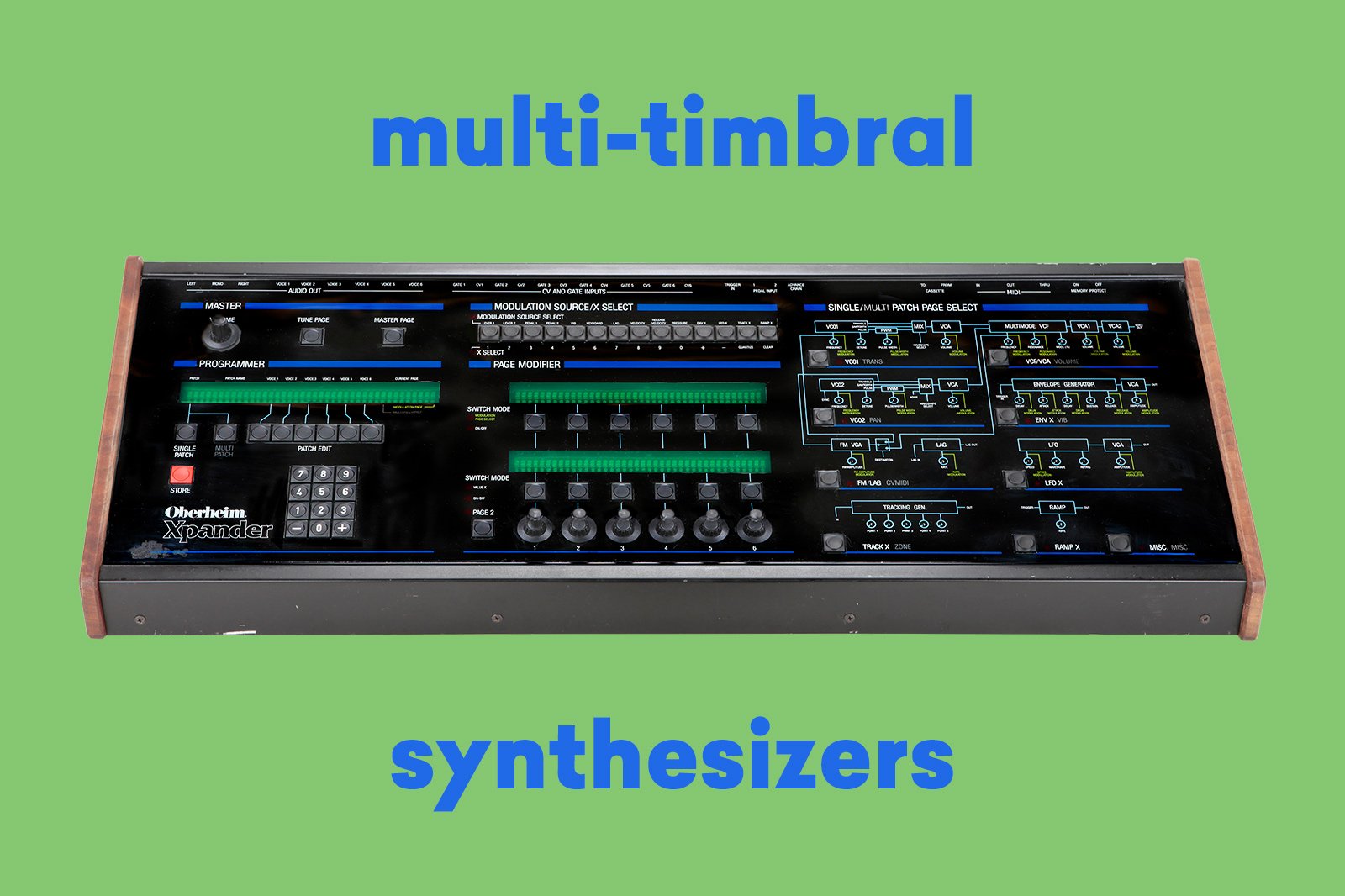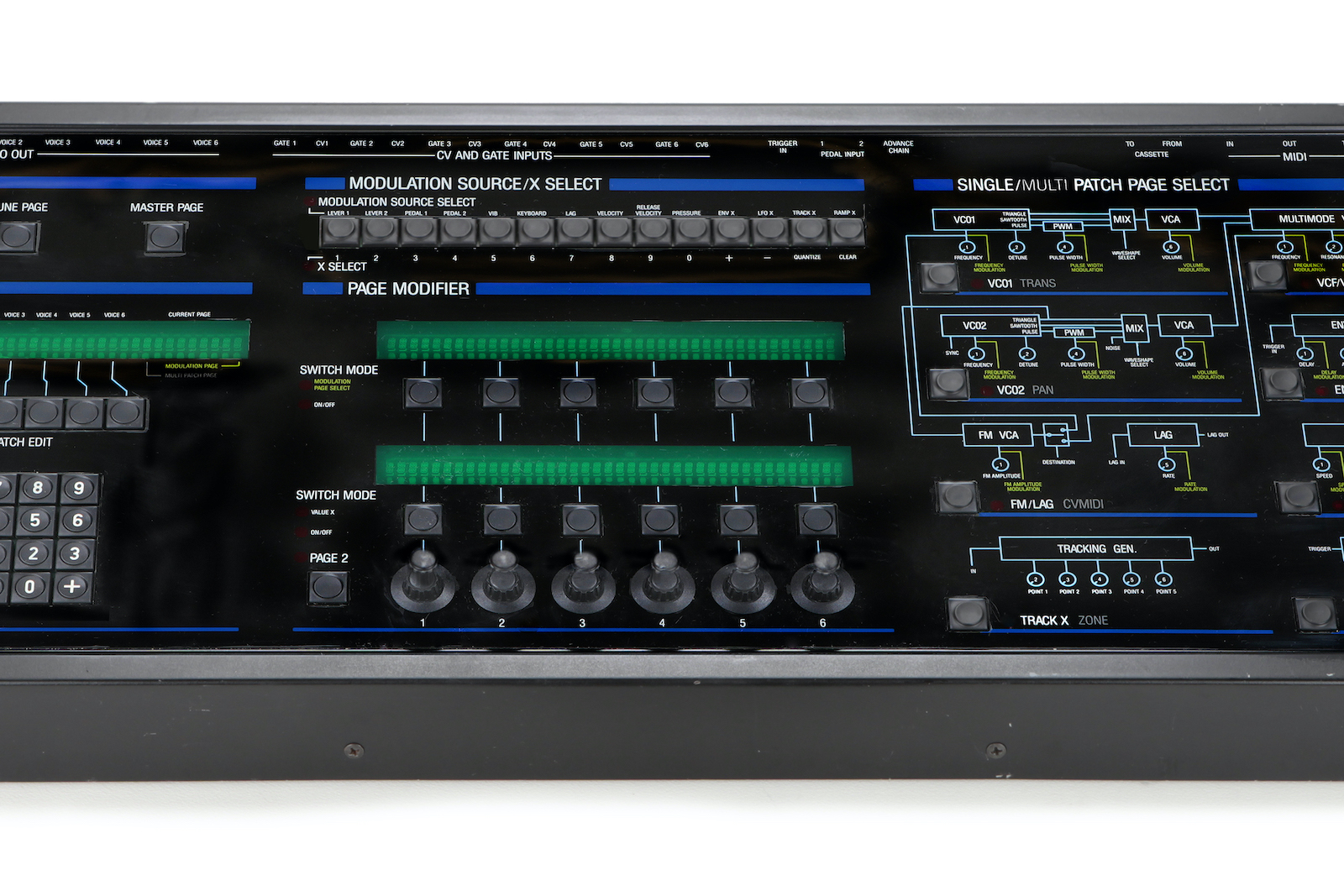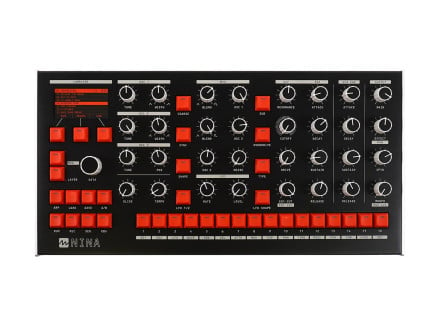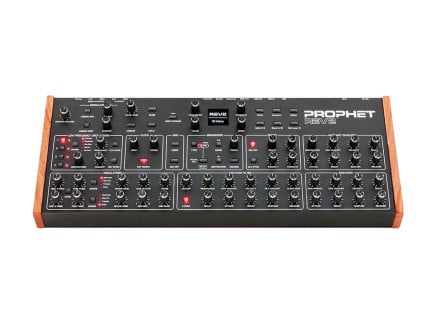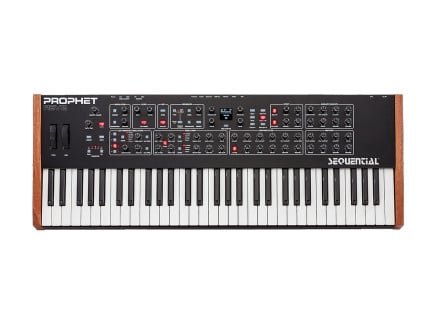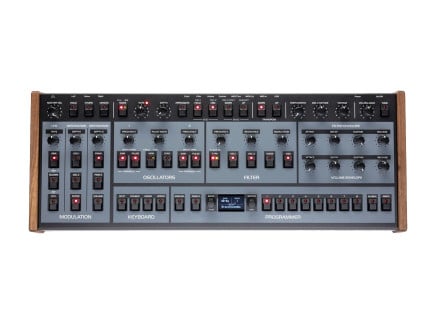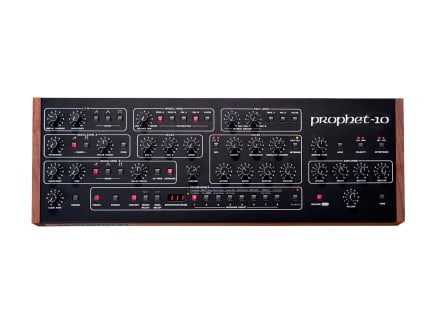A multitimbral synth can play two or more distinct sounds, or “timbres,” at the same time. Multitimbrality is useful in all sorts of creative ways, like layering two complementary sounds together, playing different sounds with different parts of the keyboard, or playing multiple MIDI parts from a single multi-channel sequencer. This extra capability makes owning a multitimbral synth a lot like owning multiple synths rather than one.
Let’s dig into how this awesome feature got its start, the reasons why multitimbral synths are so useful, and why this largely overlooked feature is starting to pick up steam again. We’ll also go over how you can use multitimbral synths to improve your music-making workflows and jams.
A Brief History & How Multitimbral Synths Work
When multitimbral synths first gained traction in the mid-1980s, the proposition of one synthesizer that could perform the job of two or more held a lot of weight. One of the most iconic multitimbral synths of the era, the Oberhiem Xpander, is still one of the most fully-featured instruments of its type—and a great platform for reviewing the different ways synths play multitimbral patches. That said, let’s take a look at the Xpander as a model for how multitimbral synthesizers work as a whole.
[Editor's note: if you're curious to dive deeper into the Xpander, we recommend you check out our dedicated article about its keyboard-laden sibling, the Oberheim Matrix-12.]
Assigning Timbres to Voices
The Xpander had six voices, and each one could be set to produce a completely different sound from the others. It’s important to note that multitimbral functionality doesn’t magically double your synth’s voices; you’re still limited by your synth’s maximum voice count. Some multitimbral synths allow you to choose exactly how many voices to allocate to each sound, while others automatically divvy up the voices or shift them between voices, as needed. Also, most multitimbral synths can’t play a different sound on every voice, instead limiting you to just a few distinct timbres across some higher number of voices. The Xpander was just particularly awesome.
So with its six-part multitimbral capability, the Xpander could deliver a kick, snare, high-hat, bass, and power chords all at once. At the time, it was as close as you as you could get to DAW-like functionality from a single device. It was so complex and sophisticated in its time, that the Xpander was priced at nearly $4,000—and we’re talking 1980s money!
Controlling Your Different Timbres
The Xpander, just like modern multitimbral synths, allowed you to decide how each timbre was controlled. You could play sounds on top of one another all at once using the keyboard, referred to as layering. You could also assign a certain range of keys to the sound so it only played when using a particular section of the keyboard, called assigning zones.
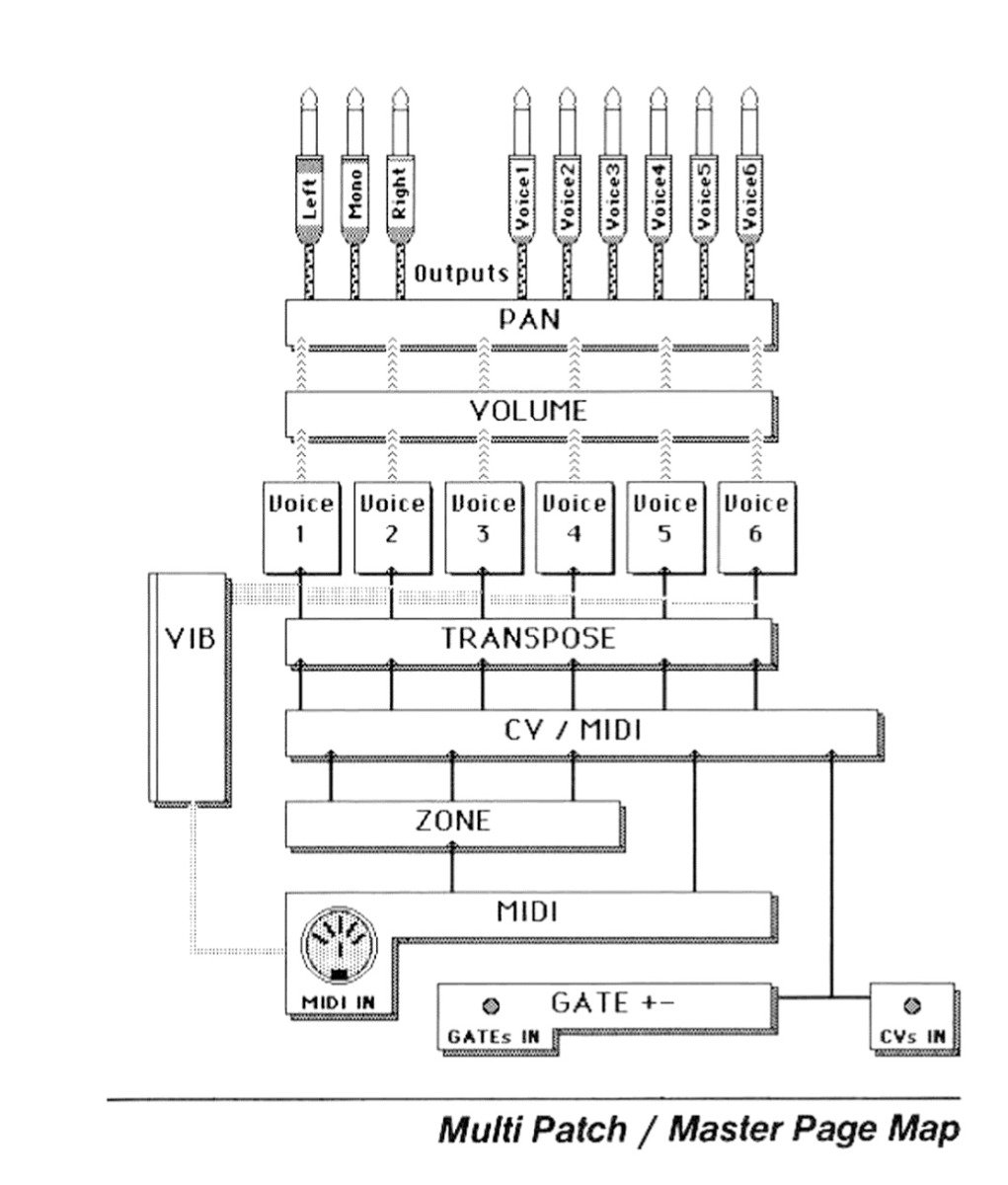
[Above: control routing options from the Oberheim Xpander user manual.]
Today, many multitimbral synths simplify this concept by dividing the keyboard into halves, with each half dedicated to a different sound or set of sounds, referred to as a keyboard split. The Xpander also allowed you to assign any voice to a specific MIDI channel (new tech at the time) or to a dedicated CV input. So, you had four ways of addressing individual timbres: directly via MIDI or CV, or via dedicated "zone," or by layering with other timbres.
As a testament to the Xpander’s excellence, there are very few multitimbral synthesizers today that employ this much control method variety. Most do allow for layering, MIDI control, and keyboard splits—but both CV addressing and the sheer granular detail with which you could specify control in the Xpander are rare.
The Xpander also allowed for each sound to be summed through a stereo output and/or sent to a dedicated direct out. Many modern-day multitimbral synths include direct outs for each timbre—but sadly, many also don’t, so this is something to look out for when picking a synth. With a dedicated output, you can track and process timbres individually, just as if you had two synths. If you don’t have that, then when recording or processing your sound, each timbre will be linked to the same audio channels…a potential downside, depending on your workflow.
Into the 1990s + 2000s
After the Xpander, digital synth tech opened the flood gates some of the first iconically popular multitimbral synths, such as the Nord Lead and Access Virus virtual analog synthesizers, each with up to 16-part multitimbrality (requiring an expansion in the case of the Nord Lead); the current versions of both, the Lead and Virus, remain solid multitimbral picks to this day.
[Above: the Nord Lead and Access Virus.]
Eventually, multitimbral synthesis evolved into the massive keyboard workstations that ruled supreme in the 1990s. These digital monsters gave the power of an entire orchestra to the player for the first time proving to be a big step forward for writing music with synthesizers.
But, as we know, keyboard workstations aren’t exactly the hot ticket these days, as home computers have become much more powerful, and DAWs have largely taken over the roles of tracking and providing virtual instruments. Unfortunately, as a result, multitimbral synthesizers are often viewed similarly: a relic of the time before DAWs.
Why would you need your synth to play two patches when you can just track separately in a computer? Because it extends your sound design range, helps you maintain creative momentum while composing, and makes for way better synth jams.
Why Go Multitimbral?
Multitimbral synths are useful in every stage of the music enjoyment process. From writing to tracking to playing live, more sounds at once means more possibilities and often a more streamlined workflow. More than all that, though, multitimbral functionality allows you to get more value out of one piece of gear, so it’s an excellent route for the budget-conscious and for those who prefer more minimal setups.
Layering
Let’s talk about one of the prime modern uses for multitimbral synths: layering, or combining two sounds into one.
Building sounds with two patches gives you more of everything. Instead of, say, two oscillators, you get four, along with double the filters, modulation, and whatever else the synth has to offer (excluding global parameters). With a surplus of sonic resources, you’re able to apply a laser focus to your sound crafting and dedicate more patch elements to specialized roles.
Layering often takes the form of sculpting extra-rich soundscapes on the fly—a special kind of magic reserved for multitimbral instruments. Stacking an evolving drone beneath a shimmering pad or a crashing wave of saturated harmonics without dancing between your synth and a DAW is just a different experience. And because it all comes from the same place, the different sounds are often more cohesive, requiring less processing to glue together in a pleasing way when compared to the results you get pairing your synth with a VST or another synth.
Layering can also be one heck of a problem solver, especially when you want to add to a patch without ruining what you’ve built so far.
Maybe you want some modulating sizzle on top of your bass without applying a heap of distortion or raising the filter; use another timbre to layer some saturated and high-passed airy tones or moving noise. Or, what if you’re happy with the movement of your slightly detuned chords but need more oomph in the low-mids: load up another layer with a saw or square to prop things up, maybe with some saturation and a band-pass, if you got it. Using multiple sounds to make an already good sound even better is often a lot quicker and easier than reworking things from the ground up.
Performing & Composing
Multitimbral synths are a huge asset to live performers, as they can take care of multiple parts, giving you a bigger sound with less gear. This is amplified by the fact that multitimbral synths tend to be highly-flexible sound shapers, allowing for totally different parts of a track to come from the same machine. Next time you’re synth shopping, consider the possibility of filling two chairs with one synth.
For many synthesizer-powered music-makers, the writing process isn’t too different from a live jam, and that’s exactly why multitimbral synths help with composing—you can play more parts at once and make more present judgments. And again, the value of multitimbral synths really hits you the first time you don’t have to get back the computer to set up another VST track or rig up another synth—you’re able to keep your momentum. That immediacy is nurturing to new ideas that are so often lost in the synth-to-DAW shuffle.
Top Multitimbral Synths Today
While multitimbral synths saw a decline with the rise of DAWs, multitimbral functionality has had something of a resurgence, with more people becoming interested in the hands-on approach of hardware and less interested in staring at computer screens. Thankfully, the current multitimbral synth options are in a pretty good place, with more emerging all the time. Here are some of the best multitimbral synths available today.
ASM Hydrasynth Deluxe
The Hydrasynth Deluxe is an extremely versatile multitimbral synth capable of splitting its 16 voices across two patches, with eight voices per patch. You can layer the patches or split the keyboard to play the sounds separately.
The Hydrasynth Deluxe’s keyboard split feature includes not only the ability to choose where the split between sounds occurs on the keybed, but you can also crossfade sounds for smoother transitions. This isn’t only useful for combining complementary timbres, but can also be used to adjust a patch that you want to behave differently on one end of the octave register without compromising how the patch sounds on the other end.
To do this on the Hyrdrasynth Deluxe, you could simply copy the patch, make the desired adjustments, and use the keyboard split crossfading to gently blend into the modified version of the patch wherever it feels appropriate on the keybed. The end result could sound like one perfectly-crafted patch that floats, crushes, or weaves its way through the octaves just as intended—and that’s just one of the many ways the Hydrasynth’s multitimbral capabilities can add to your sonic arsenal.
Try cleverly assigning poly aftertouch to increase the loudness of one layer while decreasing the loudness of the other, for instance—you’ll have a pressure-sensitive, patch-morphing synthesizer in no time.
Melbourne Instruments Nina
It’s safe to say you can do things on the Melbourne Nina that are impossible on any other standalone synth. This pioneering instrument is special in many ways, but here we focus its unique multitimbral capabilities.
The Nina can play up to four sounds at once, and you have complete control over how you split resources between the sounds. You choose how many of the Nina’s 12 voices to allocate to each sound, what zone on the keyboard plays each sound, and where the audio of each sound goes. With four outputs, you can route each sound to a different output for separate processing, making the Nina truly four synths in one.
Nina’s interface is arguably the smoothest and most immediate experience available yet for multitimbral patch editing. It has motorized knobs that physically adjust in real-time to the selected patch, so the interface is always an accurate portrayal of the current patch’s parameters. This gives the Nina an intensely hands-on workflow you definitely won’t find anywhere else.
If that’s not enough for you, Nina has another, very unique, multitimbral trick up its sleeve. Each of the four layers can morph between two patches with the turn of a knob—and we’re not talking about a simple audio crossfade. The individual patch parameters actually shift during the patch morph, creating a much more complex transition between sounds.
In nearly every aspect of its design, the Melbourne Nina is tasteful and innovative—and, of course, it sounds incredible. This one should definitely be on your radar.
Elektron Digitone
There’s nothing quite like Elektron gear, especially in the case of the Digitone being a modern, strictly FM synth attached to Elektron’s renowned onboard sequencer. The Elektron Digitone probably has the most complex and fully featured multitimbral support out of any synth on this list; it’s also one of the most affordable.
The Digitone can play up to four sounds at once using its eight voices across the sequencer’s four tracks. You have thorough control over how many voices are dedicated to each track and how the voices behave when swapping between tracks.
Additionally, using sound locks, the Digitone can hot-swap between timbres on a single track; this is why the Digitone often sounds like it has way more than four tracks. This is incredibly efficient for programming sounds that occur at different times, such as kick and snare, as both sounds can be housed on a single track and only take up a single voice. There’s no relevant limit to how many sounds you can incorporate into a sequence, so Digitone projects can get pretty wild with so much power built into a single sturdy unit.
Moog One
The Moog One is considered by many to be the pinnacle of synthesizers. It’s an uncompromising analog beast that does basically everything while retaining that famously powerful Moog sound. It’s Moog’s only current truly polyphonic synth, with both eight- and 16-voice versions, and—you guessed it—it’s multitimbral.
The Moog One can play up to three different sounds at once, which it appropriately designates as separate synths on the interface. Switching between the different synths for editing is just a single button press away, after which all the interface controls are specific to the chosen timbre. Uniquely, each Moog One timbre gets its own arpeggiator and sequencer, making it a real composing powerhouse. Key ranges and outputs are also fully customizable for thorough control.
There’s a lot more to say about the Moog One than what we can fit here, so if your curiosity is piqued, it’s definitely worth digging a little deeper into Moog’s polyphonic and mulittimbral masterpiece.
Sequential Prophet Rev2
The Sequential Prophet Rev2 is a synth workhorse if there ever was one. It checks a lot of boxes. It’s analog, polyphonic, has up to 16 voices, brings mountains of modulation, and is backed by the sound and name of the legendary Sequential brand and subsequent Prophet synth lineage. It’s also relatively affordable as an analog polysynth with so much functionality.
And, of course, the Rev2 is multitimbral, with the ability to play two sounds at the same time as layers or using a keyboard split. You can send the output of each sound to one of two sets of stereo outputs or sum the two sounds into one stereo output. With so many voices, the Prophet Rev2 is another synth that genuinely feels like having two synthesizers. For example, you could have two piano players playing complex compositions using a single Rev2 engine without missing a note.
Of course, this list isn't exhaustive, and there are plenty of other rad multi-timbral synths out there. Check out the Sequential Prophet-10, the Oberheim OB-X8, Novation Summit for even more options for multi-timbral synths.
More Sounds = More Fun
In addition to presenting big advantages for composing and performing live, multitimbral synths make powerful jam companions. Being such versatile instruments, providing synthesizers with multitimbral functionality just makes sense, and it’s surprising we don’t see the feature more often.
Anyone interested in getting more out of their gear should take a close look at their multitimbral options. Choosing a multitimbral synth could mean more ideas, better live sets, or even buying one synth instead of two. Most importantly, having more sounds at once is just more fun.

